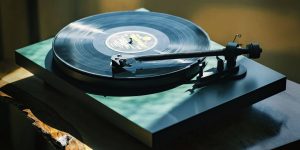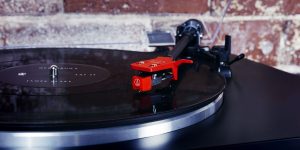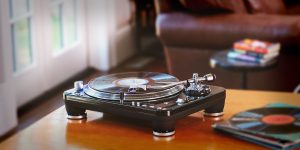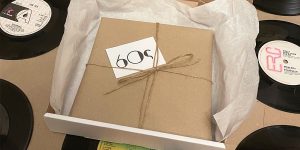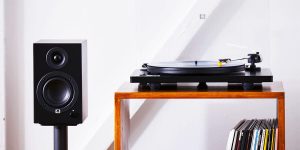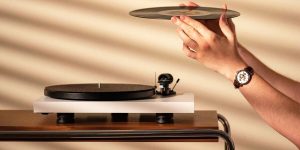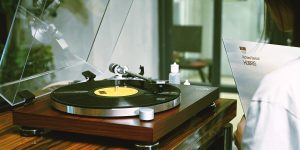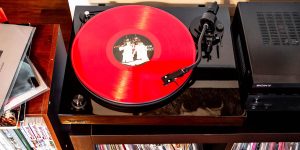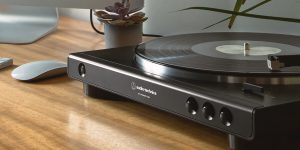If you’re just starting out with turntables, or you’ve been DJing for a while and want to take your skills to the next level, mastering pitch control is a must. In this article, we’ll discuss what pitch control is, how it works, and give you some tricks for getting the most out of it.
So, what is pitch control?
Pitch control on a turntable is used to change the speed of the record being played.
By speeding up or slowing down the record, you can adjust the pitch, or how high or low the music sounds. Some turntables have a built-in pitch control feature, while others require an external controller. If your turntable does not have pitch control, you can still add it by using a DJ mixer with a phono input.
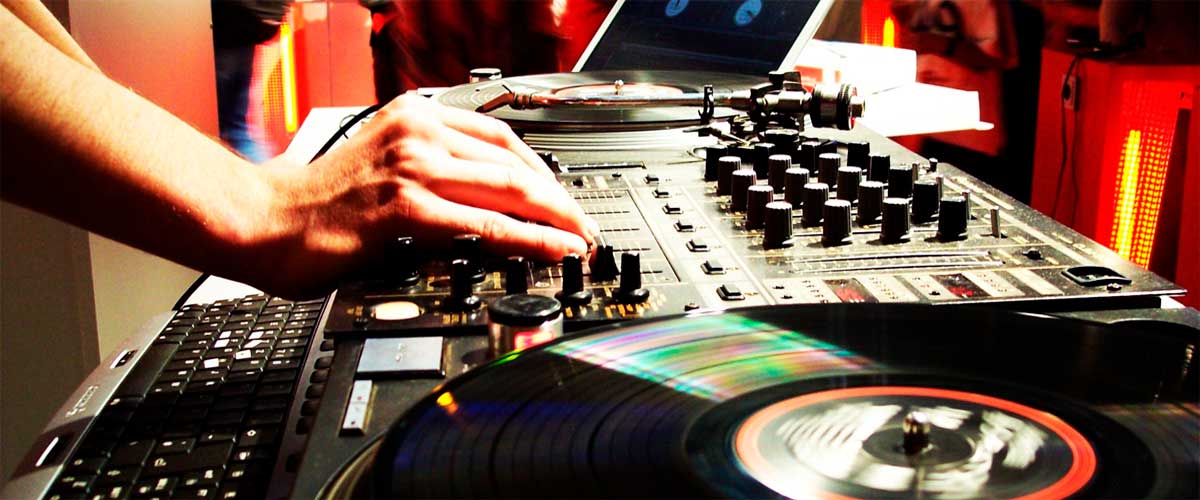
How does pitch control look like?
The most common type of pitch control is the slider. This is a long, horizontal fader that allows you to increase or decrease the speed of the platter. Some turntables have a knob instead of a slider, which can be easier to use if you’re just starting out.
If you have a direct-drive turntable, you’ll also see a button labelled “33” or “45.” This switches the platter between those two speeds. Most records are designed to be played at 33rpm, but some older ones (or singles) are meant to be played at 45rpm.
Finally, some turntables have an LED display that shows you the current speed. This can be helpful if you want to be very precise with your pitch control.
The types of pitch control
There are two main types of pitch control: manual and automatic.
- Manual pitch control requires you to adjust the speed of the record manually, using a knob or slider on the turntable or DJ mixer. This type of pitch control gives you more control over the tempo of your mix but can be more difficult to use than automatic pitch control.
- Automatic pitch control is controlled by software, which automatically adjusts the speed of the record to match the tempo of the track that is playing. This type of pitch control is easier to use than manual pitch control but offers less flexibility when it comes to mixing tracks together.
Most DJs prefer to use a combination of both manual and automatic pitch control to get the best results.
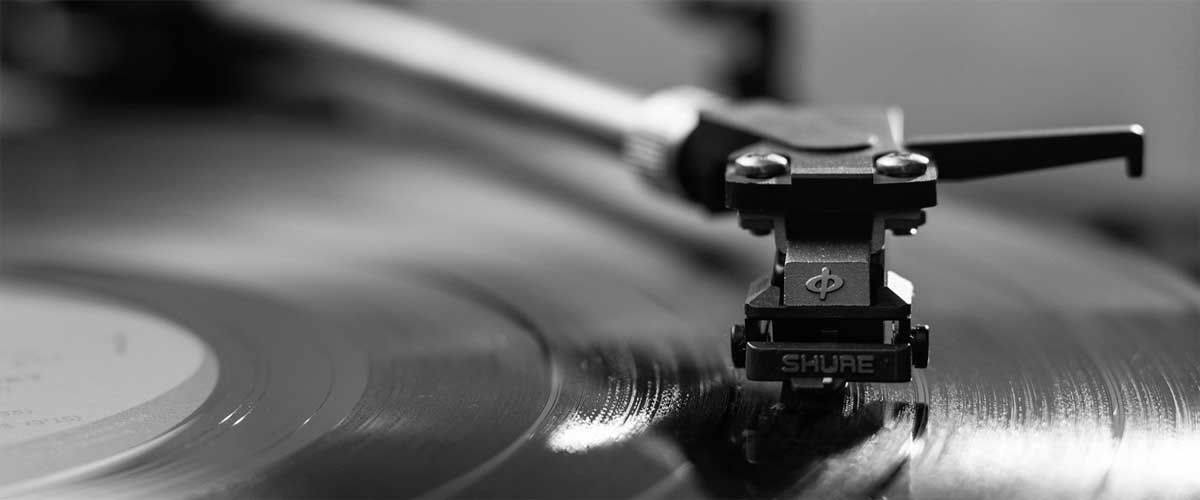
Pitch control specs
Pitch control range
One of the most important specs to look for when shopping for a turntable is the pitch control range. This refers to how much you can slow down or speed up the record without affecting its playback. A wider pitch control range gives you more flexibility when mixing, so it’s something to keep in mind if you plan on using your turntable for DJing.
Most entry-level turntables have a pitch control range of +/- 12%. That means that at its lowest setting, the record will play back 12% slower than normal, and at its highest setting, it will play back 12% faster. Some higher-end models have a pitch control range of +/- 20%, which gives you even more leeway when mixing.
Pitch control accuracy
One of the main things to consider when choosing a turntable is how accurate the pitch control is. The last thing you want is your music sounding warbly or sped up/slowed down. Most entry-level turntables will have an accuracy of +/- eight percent, which is perfectly fine for most people. If you’re a vinyl purist or need to mix tracks, however, you’ll want to look for a turntable with an accuracy of +/- three percent or better.
To test a turntable’s pitch control accuracy, simply play a record and use the pitch control to slow it down or speed it up. If the sound quality stays consistent, then the turntable has good pitch control. If the sound quality deteriorates, then you’ll want to look for a different model.
Another thing to keep in mind is that some turntables have a built-in strobe light that can be used to check the pitch control accuracy. This is a handy feature if you need to mix tracks or play vinyl at a professional level.
Lastly, it’s worth mentioning that most DJ turntables will have an adjustable pitch control range. This means that you can slow down or speed up the record without affecting the overall pitch of the music. This is an important feature for DJs who need to beatmatch tracks.
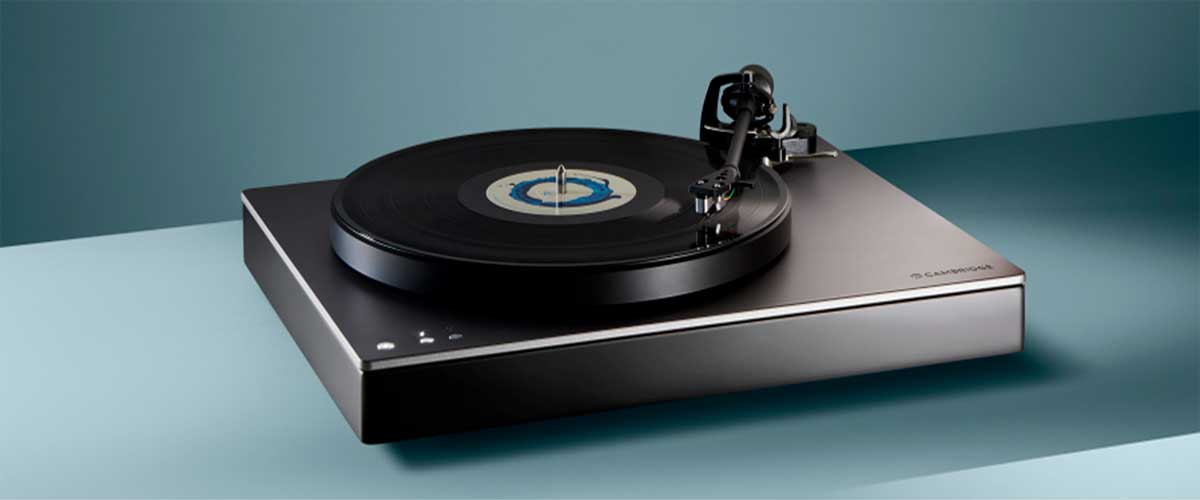
When pitch control can be helpful?
Pitch control allows you to change the speed of your turntable, which can be useful for a number of reasons:
- If you want to play a record at a different speed than it was intended, pitch control lets you do that.
- If you’re looking to beatmatch two tracks but they’re not quite at the same tempo, you can use pitch control to nudge one of them up or down until they match perfectly. Generally speaking, most DJs use pitch control to either slow down or speed up records so they can mix them together more seamlessly. By slowing down or speeding up one record to match the BPM (beats per minute) of another, DJs can create smooth transitions between tracks that sound great on the dance floor.
- By changing the pitch of a record, you can create new sounds and effects, so, some DJs like to use pitch control for creative purposes – for instance, speeding up a record so it sounds more high-pitched and “chipmunked,” or slowing it down so it’s nearly unrecognizable. Pitch control is also used to change the key of a song. For example, if you have a record that is in the key of C and you want to play it in the key of D, you can use the pitch control to raise the pitch by one semitone. This can be helpful for mixing records that are in different keys.
- Finally, pitch control can be helpful if you’re trying to learn a new song on your turntable. By slowing down the tempo, you can better hear the individual notes and get a feel for the rhythm of the song. Once you’ve got it down at a slower speed, you can gradually increase the tempo until you’re able to play it at its normal speed.
So those are some situations where pitch control can be useful. In general, it’s a good idea to experiment with pitch control and see how it affects the tracks you’re playing. You might be surprised at how much difference a small adjustment can make.
Tips for getting the most out of pitch control
Here are some tips for getting the most out of pitch control:
- Experiment with small changes first. When you’re just starting out, it’s best to make small adjustments to the pitch until you get a feel for how it affects the track.
- Pay attention to the overall sound of the track. As you experiment with different pitches, pay attention to how it affects the overall sound of the track. If the track starts to sound “off,” it’s probably time to make a small adjustment.
- Use pitch control to your advantage. Once you get the hang of it, you can use pitch control to your advantage when mixing and matching tracks. For example, if you want to create a seamless transition between two songs with different bpms, try adjusting the pitch of one or both tracks until they’re in sync.
With a little practice, you’ll be a master of pitch control in no time! Just remember to start slow and experiment until you find what sounds best.
We are supported by our audience. When you purchase through links on our site, we may earn an affiliate commission at no extra cost to you.
Our newsletter
* We will never send you spam or share your email with third parties

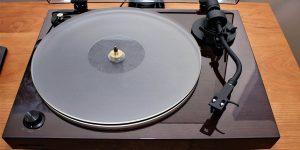

![Best Turntables Under $100 [Reviewed and Tested]](https://righttechadvice.com/wp-content/uploads/2023/09/best-turntable-under-100-300x150.jpg)
![Best Turntables Under $300 [Reviewed and Tested]](https://righttechadvice.com/wp-content/uploads/2023/10/best-turntable-under-300-review-300x150.jpg)
![Best Record Players Under $200 [Reviewed and Tested]](https://righttechadvice.com/wp-content/uploads/2023/10/best-turntable-under-200-300x150.jpg)
